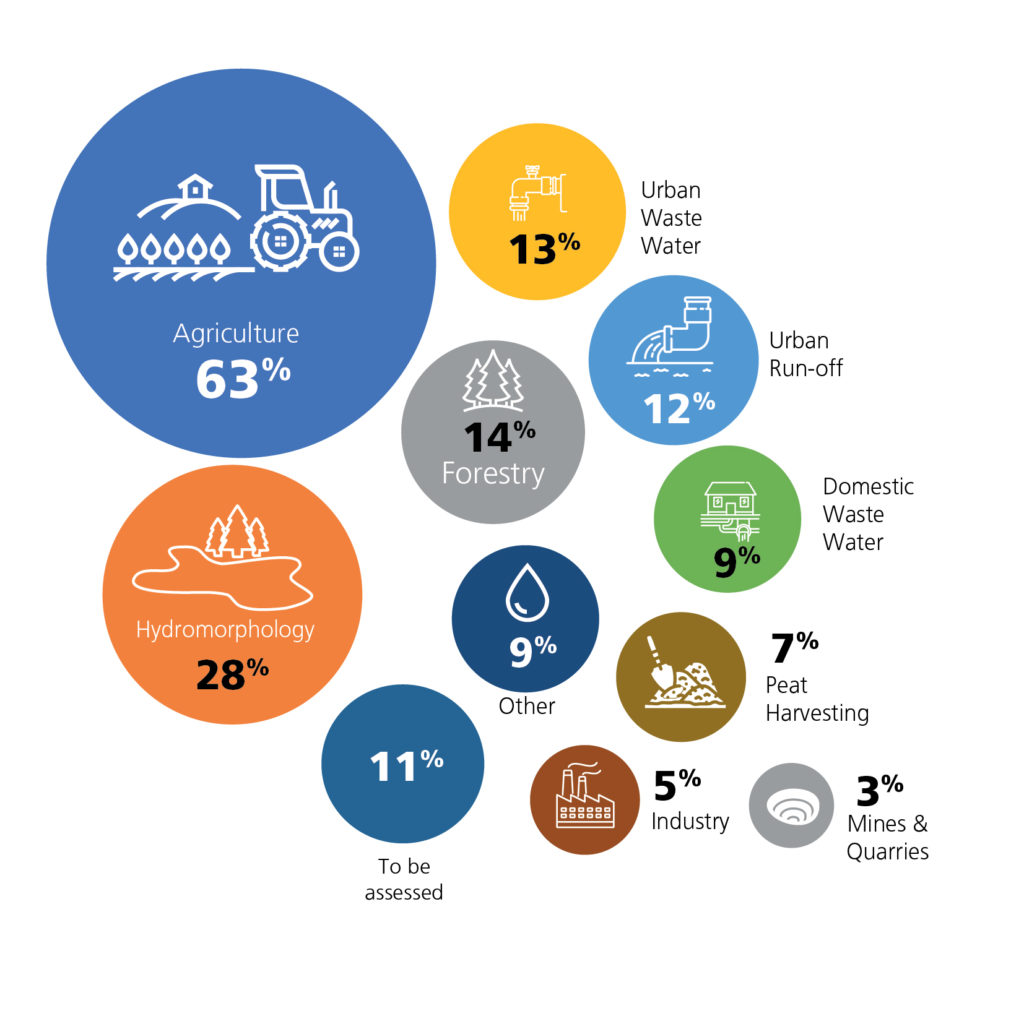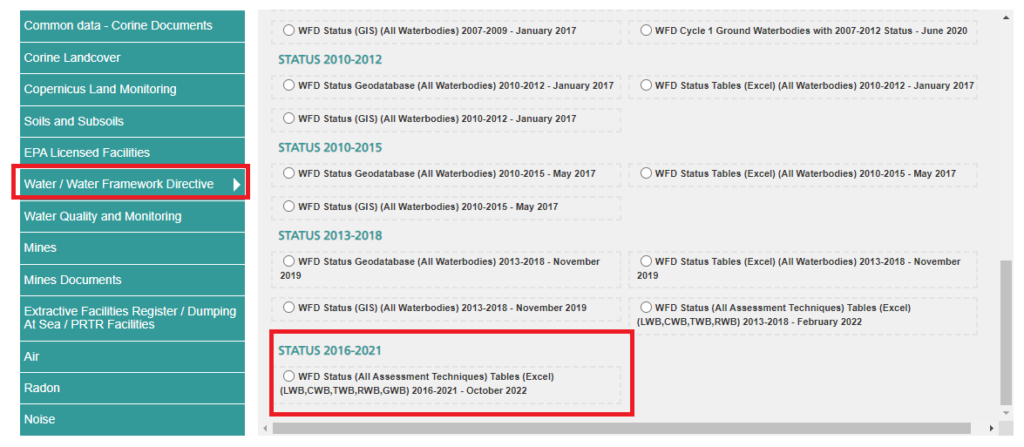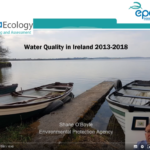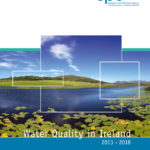The EPA report Water Quality In Ireland 2013-2018 was originally…
Water quality in Ireland 2016-2021: the quality of our rivers, lakes, estuaries and coastal areas continues to decline
14 October 2022: The Environmental Protection Agency (EPA) has published the Water Quality in Ireland Report 2016-2021 which provides the latest assessment of the quality of Ireland’s rivers, lakes, estuaries, coastal and groundwaters. Water quality in Ireland has further declined. While improvements are being made in some areas, these are being offset by declines in water quality elsewhere. At the current level of progress, Ireland will fail to meet the EU and national goal of restoring all waters to good or better status by 2027.
The Water Quality In Ireland Report shows that water quality in Ireland is not as good as it should be. Only just over half of rivers, lakes, estuaries and coastal waters are in satisfactory condition. The overall ecological health of these surface waters has declined across all water body types since the last assessment (2013-2018). This means these water bodies are less able to support healthy ecosystems for fish, insects and plants.
While the decline in water quality of our rivers and lakes is relatively small (one and three percent of waterbodies respectively), the number of estuaries and coastal water bodies in satisfactory condition has decreased by almost 16 percent and 10 percent respectively.




These declines are mostly along the southeast and southern coasts where nitrogen emissions from agricultural activities are having a significant negative impact on water quality. Excess nitrogen causes algal blooms in our estuaries which can damage the ecosystem, and excess nitrogen in drinking water can pose a risk to human health.
The scale of the declines in our estuaries and coastal waters is alarming. In recent years the EPA highlighted that nutrient levels in our rivers and groundwaters are too high and that trends were going in the wrong direction. We are now seeing the impact of these emissions on our estuaries and coastal waters. Areas such as Cork Harbour, Wexford Harbour and the Slaney, Suir and Nore estuaries have lost their good water quality status. This directly impacts the marine biodiversity and ecological value in these areas.
Dr Eimear Cotter, Director of the EPA’s Office of Evidence and Assessment
The report highlights that since the last assessment published in 2019, the number of monitored water bodies in satisfactory condition has declined by:
- 1 percent in rivers,
- 3 percent in lakes,
- 16 percent in estuaries, and
- 10 percent in coastal waters.
What is causing the problems?
The main pressures on water quality are agriculture, physical changes such as land drainage and dredging, forestry activities and discharges from urban wastewater. These activities can lead to run-off of nutrients, sediment and pesticides and damage to the physical habitat of waterbodies.
The number of waterbodies impacted by urban wastewater remains high, but it is reducing, and the trend is going in the right direction. The number of waterbodies impacted by agriculture has, however, increased in recent years.

Improvements in water quality are being made, particularly in the priority areas for action where there has been focussed action to restore water quality in the past three years. This shows that improvements to water quality can be made when actions are targeted. However, the gains made are being wiped out by declines in water quality elsewhere.
Mary Gurrie, EPA Water Programme Manager
What needs to be done?
The evidence presented in this report clearly shows that the goal of restoring all waters to good status by 2027 will not be achieved. Our water quality is going in the wrong direction and any improvements we are seeing are being cancelled out by declines occurring elsewhere.
The EPA is calling for urgent and targeted action to protect and restore water quality in the next River Basin Management Plan (2022-2027), and full implementation of, and compliance with, the Good Agricultural Practice Regulations.
If we are to make progress and improve water quality, Ireland needs to take the following actions:
- The next River Basin Management Plan (2022-2027) must be published with a firm commitment to address the main pressures on water quality (agriculture, hydromorphology, forestry and waste water). The Plan needs to be clear on what will be achieved by 2027, the proposed measures, the timeframes for delivery and the expected improvements in water quality. The Plan should also build on the progress made in the Priority Areas for Action with a focus on preventing further declines.
- The Nitrates Action Programme must be fully implemented to deliver reductions in nutrient losses to our waters. The existing regulations must be fully implemented by the local authorities and the Department of Agriculture, Food and Marine using the full range of tools from compliance promotion to enforcement. To support this work, the EPA will develop and implement a National Agricultural Inspection Programme for local authorities.
- Sustained investment in water services infrastructure is required to eliminate waste water as a significant pressure on water quality.
- The development of a regulatory regime to better manage and regulate activities that cause hydromorphological alteration is required. In the interim, measures are required now to address hydromorphological pressures. Public authorities such as the Office of Public Works and Local Authorities must lead by example in terms of best practice for any works on or near rivers.
- Government departments and relevant state bodies need to deliver greater coherence and integration across national programmes and policies which could impact on water quality and seek opportunities for multiple benefits particularly from climate and biodiversity measures
Actions are being taken but significant work in all sectors remains. The challenge now is to ensure that the actions set out above and in Ireland’s next national River Basin Management Plan (2022-2027) are fully implemented. This will deliver not only benefits for water quality but also multiple benefits for human health and the broader environment in terms of drinking water quality, biodiversity and climate change.
The EPA will continue to develop and communicate the science and evidence to support these actions and will through its regulatory functions address pressures from EPA-regulated activities.
Learn more:
The full report and a summary report are available on the EPA website.
Data download:
Status 2016-2021 for all waterbodies can be downloaded at https://gis.epa.ie/GetData/Download








